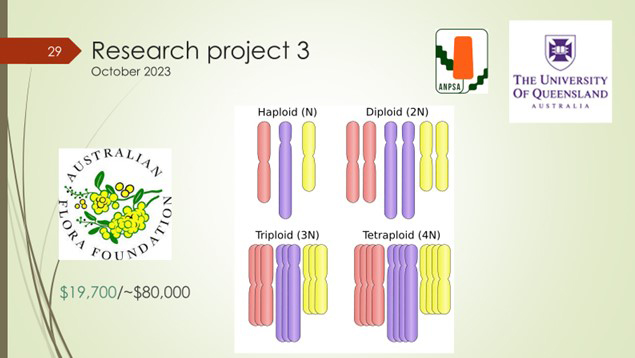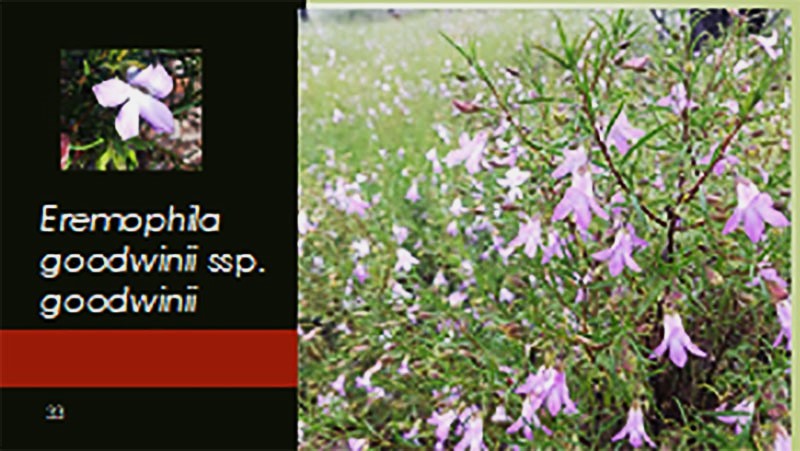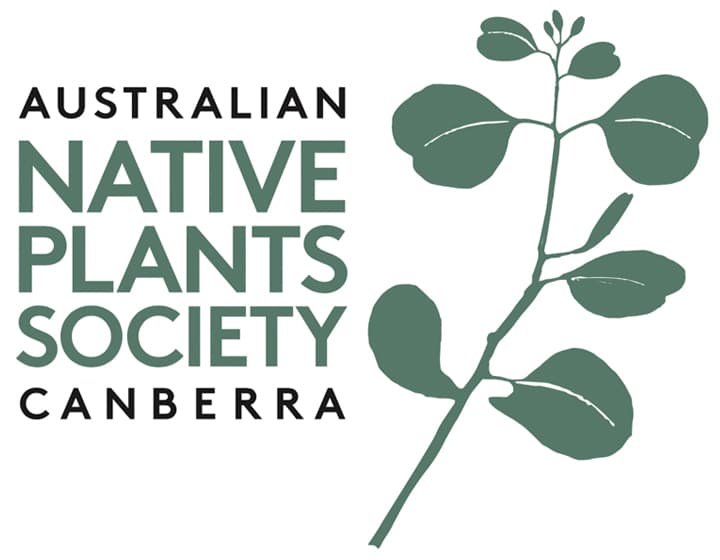Eremophilas in the landscape: Three Trips Hunting Eremophila in Queensland
By Stephen Saunders
Dec, 2023
ANPSC Members’ Meeting 12 October 2023
Speaker Dr Lyndal Thorburn, Leader, Eremophila Study Group
Lyndal is a life member of ANPS Canberra, a member of APS (Australian Plants Society) NSW South-east Region group, and the leader of ANPSA (Australian Native Plants Society Australia) Eremophila Study Group since 2015. A scientist by training if not profession, she’s kept her biology interests alive through the ANPSC Propagation Group, ANPSA Study Groups and Citizen Science groups.
She has been involved with NSW Barren Grounds Nature Reserve, Queanbeyan River Corridor Management Committee, and Queanbeyan Landcare. She and partner Tom Jordan now own a South Coast property, regenerating its local flora.
Lyndal’s interest in Eremophila (Emu Bush) kindled in 1985, when she and Tom bought a pink Eremophila maculata ‘Wendy’. They’ve since grown over 100 varieties in their shady Queanbeyan garden, discovering many are frost hardy and don’t need full sun. Said garden has also grown many Eremophilas, for ANPSC plant sales.
She entertained the October audience, with three Eremophila odysseys in Queensland/NSW. Botany at speed as it were — in a Toyota Corolla and sometimes on dirt roads — but also with scientific purpose, to find ways of growing Eremophila from seed, for mine rehabilitation.
Eremophilas
Endemic Eremophila is yet another amazingly diverse native-plant genus. Most of its 250-plus shrub or tree species are restricted to their Western Australian hotspot, in narrow habitats. However, a few dozen occur in eastern Australia.
Evolution has gifted the genus a wonderful variety of growth habits, leaf forms and flower colours.
The Study Group wondered, could a mass-germination protocol be developed, to enable mine rehab from seed-grown plants, rather than relying on tissue culture and plant hormones?

The first expedition
The first spotting expedition took place in the COVID year of 2021. A 3,500 km lap, taking in Cobar, Carnarvon Gorge and Coonabarabran.
The tally was 7 diverse species:
tree-sized (E. bignoniiflora, E mitchellii),
shrubs (E. gilesii ssp. gilesii, E. maculata ssp. maculata),
and the bramble-like tangles of E. polyclada.

The Research projects
Also in 2021, the Study Group selected University of Queensland as its first research partner. Their job was to analyse the average ‘seed fill’ of garden Eremophila fruits, as sent in by Group members.
In 2022, a much bigger ($1.5m) four-year research project began, bringing in Australian Research Council and Australian Genome Research Facility.
Icing the cake is the complementary research project of 2023, where the Study Group partners with Australian Flora Foundation to study the impact of ‘ploidy’ on Eremophila germination. ‘Ploidy’ being the number of sets of homologous chromosomes that make up the genome of a cell.
For practical rehab, ‘polyploid’ Eremophilas might incur more work than ‘diploids’, but they might be more resistant to climate change.

Second and third expeditions
The 2022 trip hugged the coast north to Lismore, then inland via Charleville and Cunnamulla. The 2023 trip of 6,000 km was all inland, going top west as far as Windorah, and returning via Bourke. The focus was very much seed collection.
These trips netted 12 more species. Once again, widely variable in their habitats; their tree, shrub or prostrate habits and their flower colours.
Recently described E. woodiae is a low shrub with distinctive hairy leaves and light-pink flowers. Another shrub, E. bowmanii ssp. latifolia, sported grey leaves with mauve or blue flowers. Taller E. duttonii offered glossy bright-green leaves, with candy-pink flowers.
Once, Lyndal and Tom followed old records of an Eremophila sighting 30-odd km from a town. Still extant, was their sought-after E. goodwinnii ssp. goodwinnii.
Lyndal commends the excellent info on the ‘Queensland Wetland’ website. You could drill down into localities and species, then drill further, to precise GPS locations of species-sightings.
As compared with WA, the eastern Eremophilas have surprisingly broad distributions, appearing to spread down the major river systems towards South Australia.

What comes next?
It is remarkable that a volunteer-based flora study group could have this impact: in terms of native-species knowledge and implications for horticulture, but also sizeable and well-connected research projects, aiming for practical benefits to landscape and industry.
With any luck, there will be future instalments for the instruction of the Society and members.

Eremophilas in the garden
After thousands of kilometres tracking Eremophilas in the wild, Lyndal considers implications for home gardens and gardeners.
Even though the genus name roughly means ‘desert loving’, a little garden shade won’t hurt, especially in hotter climates. Not to mention, they might thrive more with added watering.
Also, don’t expect the shape and size in the garden, to be the same as in the wild. As is not uncommon with various species of native shrub, don’t necessarily expect a long garden life.
The exquisite flower-colour variations, with their unusual dots and speckles, suggest that continued collections could lead to new colour varieties, for cultivars in the home garden.

Back to Articles List
